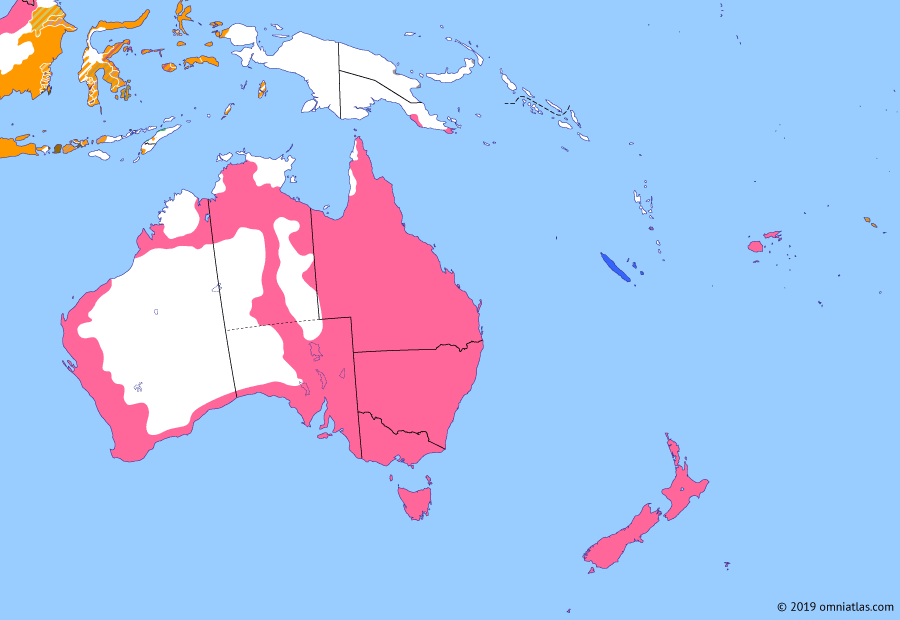Australasia 1889: Samoan Crisis

20 August 1889
20 Aug 1889
Samoan Crisis
12 Mar 1862 Crossing the Outback
21 Jun 1864 Invasion of the Waikato
8 May 1865 Fijian Confederacy
10 Nov 1868 ‘Hauhau’ Wars
22 Aug 1872 Australian Overland Telegraph Line
13 Aug 1877 British Western Pacific Territories
6 Nov 1884 New Guinea Protectorates
20 Aug 1889 Samoan Crisis
15 Mar 1893 Partition of the Solomon Islands
14 Mar 1899 Second Samoan Civil War
In the late nineteenth century Britain, Germany, and the US competed for Samoa due to their investments in its plantations and its strategic value as a coaling station. In 1887 the Germans intervened in the islands to make their favored chief king, provoking a civil war. In response, the US sent three warships to Samoa, which faced off against three German warships in Apia harbor. The crisis was brought to an inglorious end when a cyclone hit and wrecked all six warships.